This deadly disease could destroy your spring blooms – expert advice for how to combat tulip fire and prevent it from ever coming back
What to do if you're faced with this common but destructive tulip disease

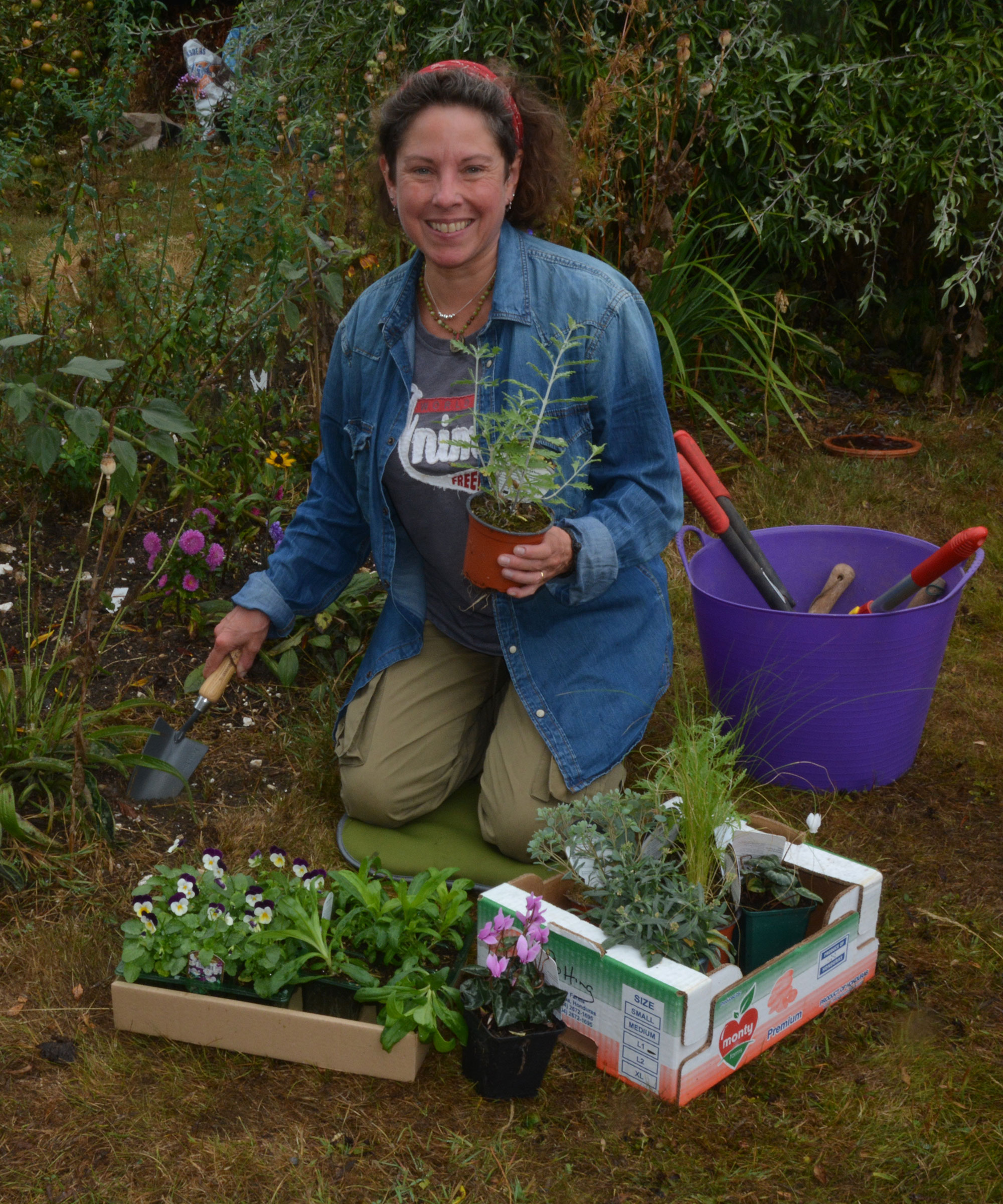
Tulips are a stalwart of springtime, but they are also susceptible to one of the gardening world’s most devastating diseases.
Tulip fire is a fungal disease caused by the pathogen Botrytis tulipae that attacks and eventually destroys all parts of the plant. Fortunately, when you plant tulips there are steps you can take to prevent the disease and reduce the chance of it infecting your garden.
I am a huge fan of tulips in all their many colors and sizes, and have grown them for decades in my yard. Here are my top tips for avoiding and treating tulip fire, to ensure a bright and beautiful carpet of spring color for years to come.
What is tulip fire?

Tulip fire looks like scorch marks on the leaves of affected plants
Tulip fire is a fungal disease that only affects tulips - other varieties of spring and summer-flowering bulbs are safe from it.
It spreads very fast, through infected soil, plant debris and airborne spores, and if you have a lot of tulips planted in the same bed tulip fire can infect each and every bulb in a short period of time, destroying your precious flower crops.
Botrytis tulipae, the pathogen that causes it, is closely related to Botrytis cinerea, the gray mold that commonly affects a wide range of plants, including strawberries and presents as a fluffy grey-brown decay on fruits, flowers and leaves.
Symptoms of tulip fire
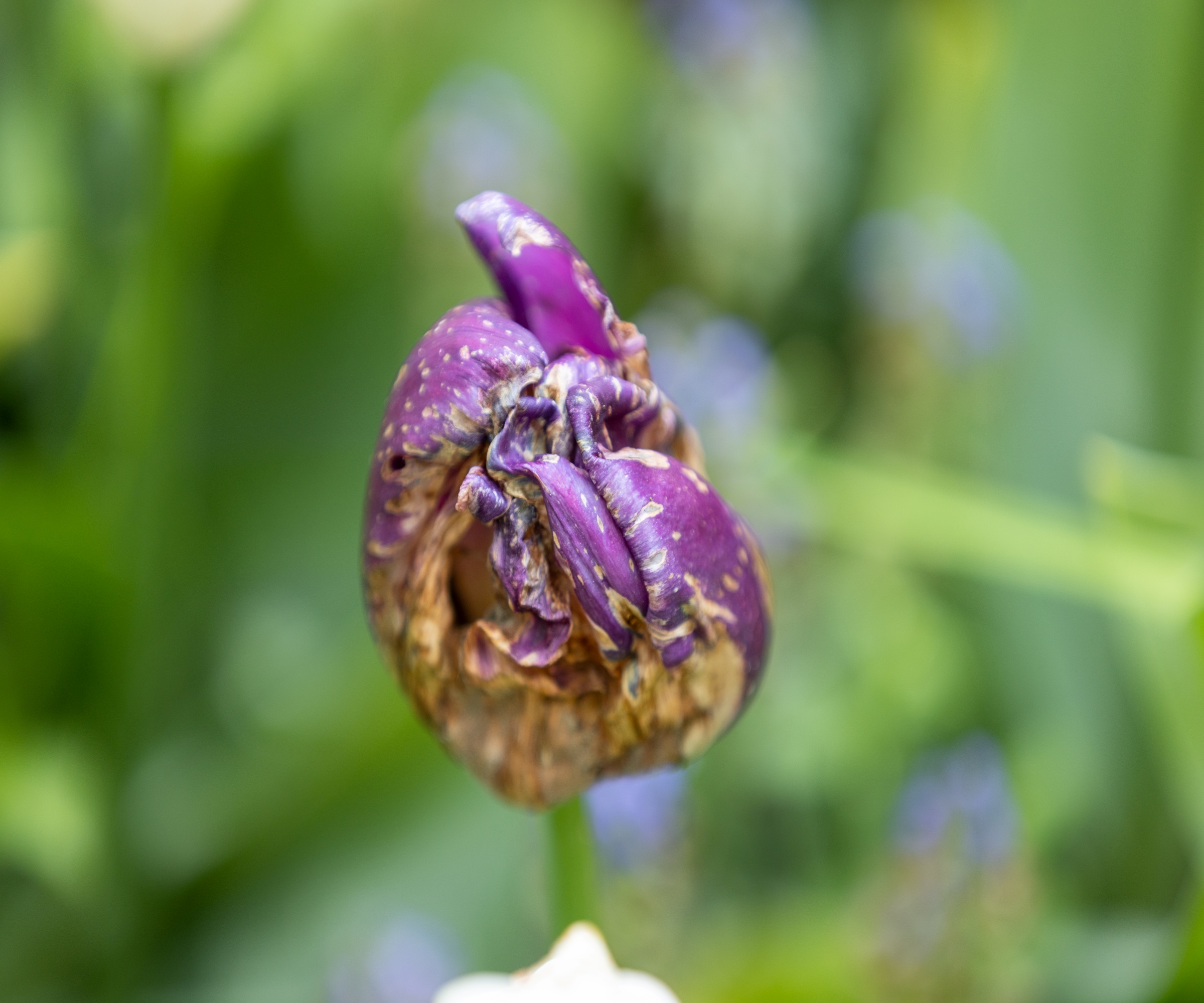
All parts of the tulip, including the buds, are affected and destroyed by tulip fire
Tulip fire gets its name from the brown markings that develop on the top growth of contaminated plants. The flowers, leaves and the stem of infected tulips look like they have been scorched.
Little black seed-like structures, known as sclerotia, develop on dead tissue and can fall off to contaminate the surrounding soil as well as the outer scales of the plants’ bulbs.
Diseased petals are quick to rot in wet weather and dead plant material will grow a grey fluffy mold when wet. Tulip fire also affects the bulbs and causes them to rot.
How to combat tulip fire
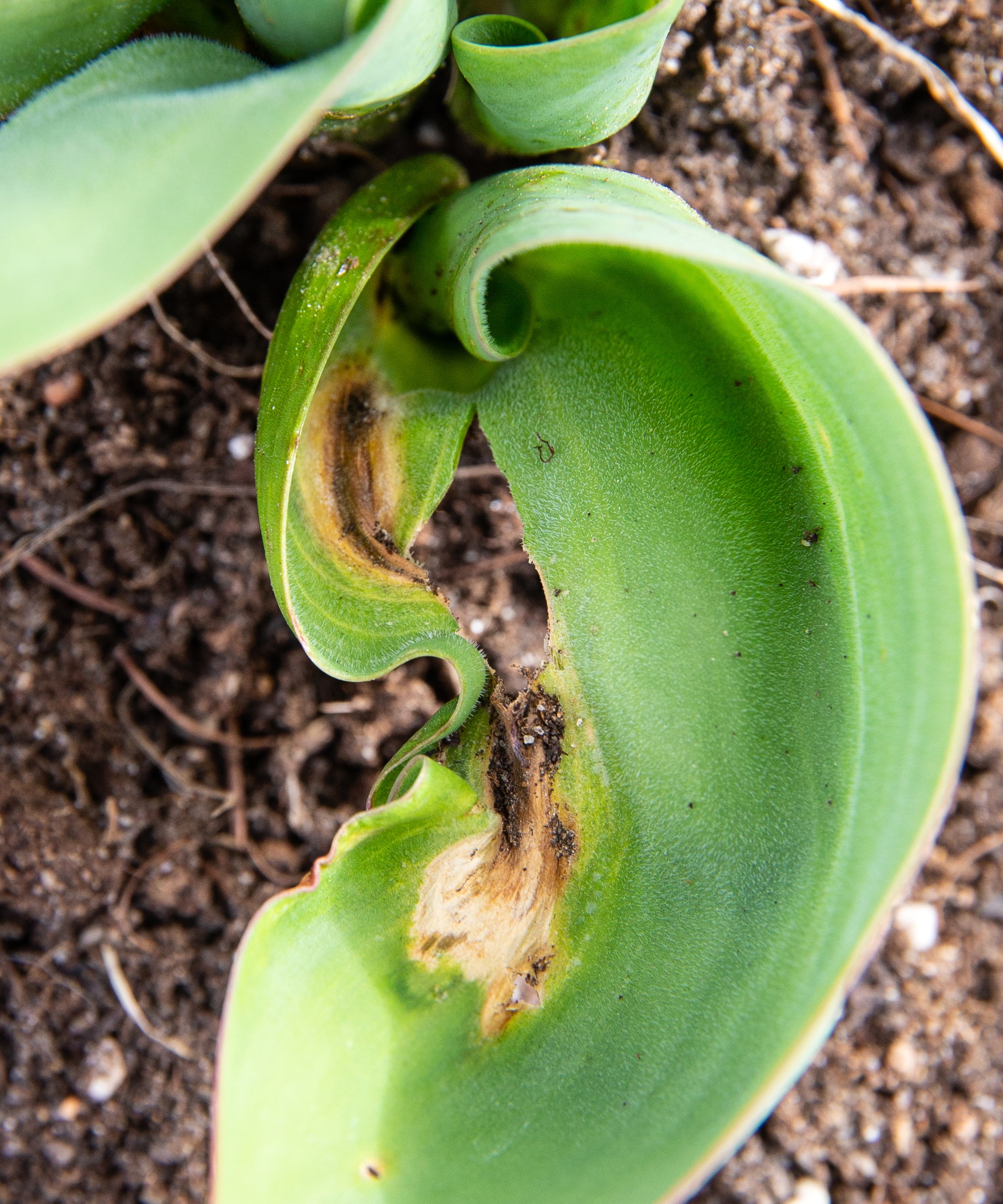
When you find tulip fire on a plant, you should remove and dispose of it immediately
There are no chemical controls against tulip fire, and fungicides available against other fungal diseases are not effective.
You must remove and destroy all affected bulbs and plant material as soon as you notice a problem, to avoid the disease spreading.
One of the most common composting mistakes is adding diseased plant material to your home compost bin. You must never do this as the spores will live on in the warmth created by the decomposing plants and be spread around the yard.
Instead, burn or discard the bulbs and top growth and always clean and disinfect any tools that have come into contact with them with dish soap, such as this from Walmart. I also wash my gardening gloves after handling diseased plants.
Once you have had tulip fire in your yard, do not plant tulips in the same soil as they were growing before for at least three years. If you have no choice but to replant in the same spot, dig the ground deeply to make sure the upper contaminated layers are buried below tulip planting levels.
Preventing tulip fire
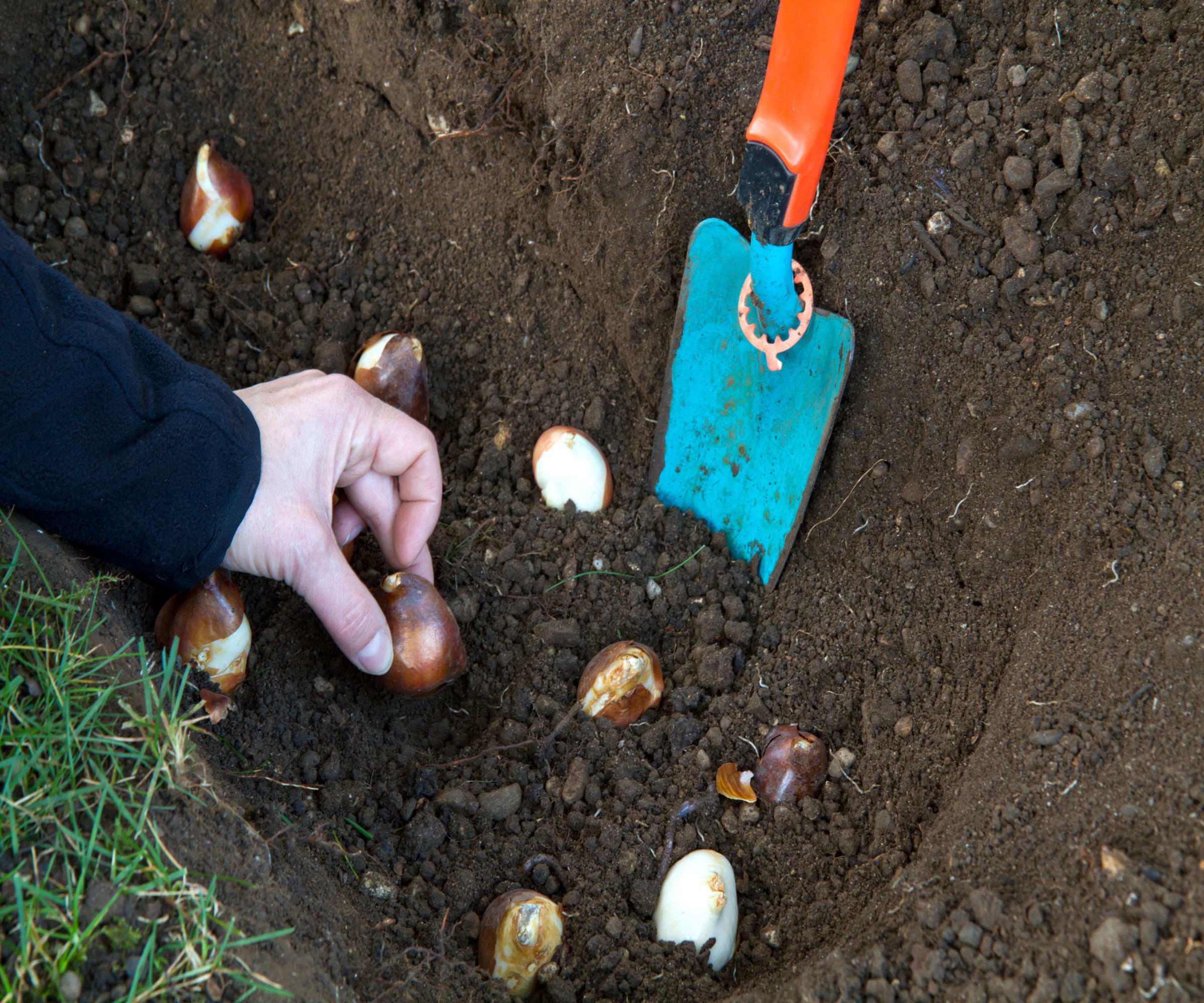
Tulip fire can be prevents by planting tulips late in the fall and at the right depth and distance apart
Like all plant fungal diseases, tulip fire thrives in warm, humid conditions so one of the easiest ways of preventing it is to plant your tulips as late in the year as possible.
Spring bulbs are usually available from late summer and early fall, so buy your tulips then to make sure you get the varieties you want, then store them somewhere cool and dark until you plant them. November is ideal, when the soil is cooler and less fungus-friendly.
Always choose firm, healthy bulbs, buy from a reputable outlet and plant your tulips at the correct depth of 6-8 inches down. Space them around 4in apart and don’t overcrowd them, because poor ventilation can cause fungal diseases.
Don’t overwater either, as soggy bulbs are more likely to rot.
How to deal with tulip fire in containers
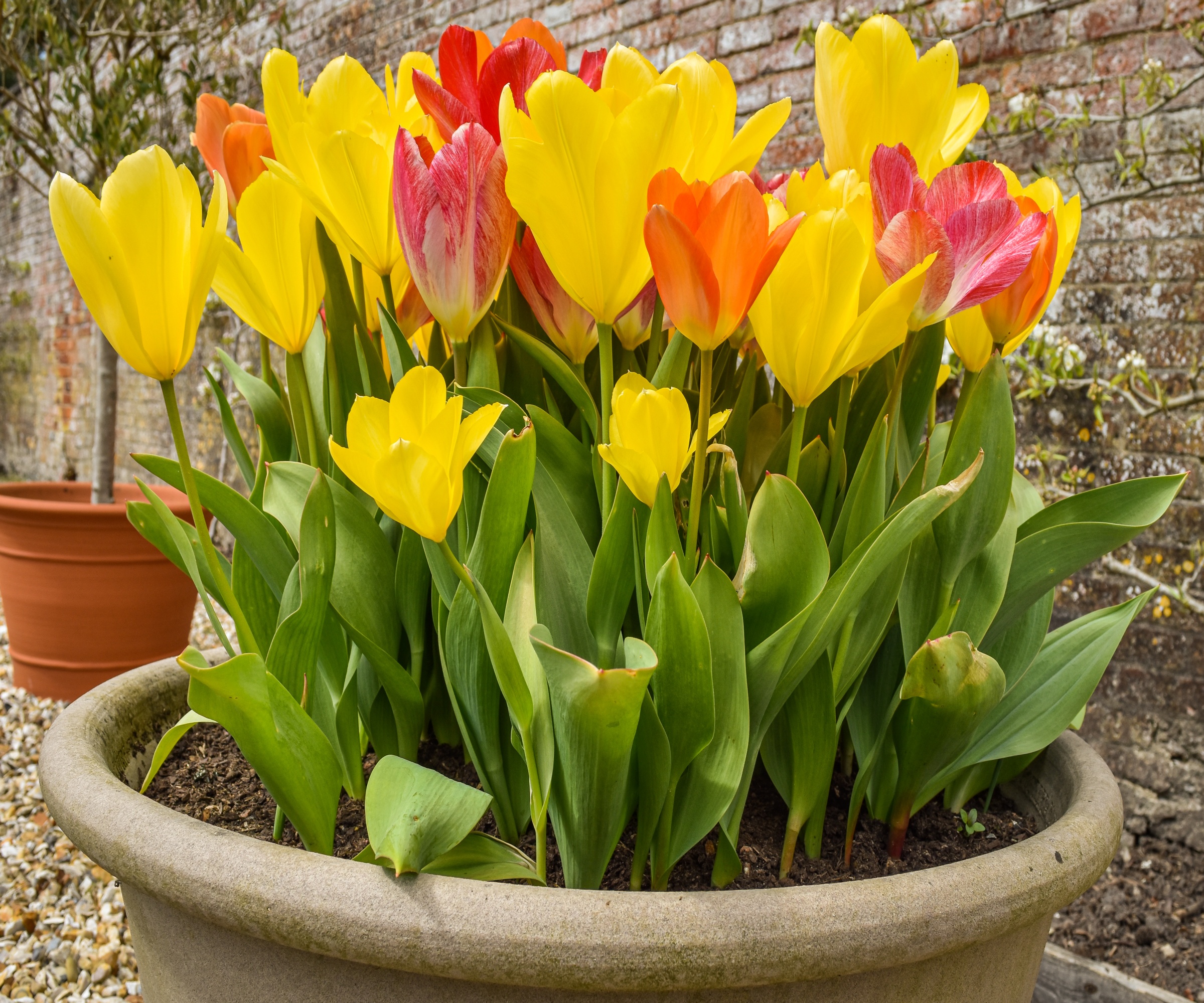
Tulip fire can affect plants growing in containers
Tulip fire can affect plants grown in containers as well as those in the soil.
If this occurs, dispose of all the affected plant material and then disinfect your tools and gloves.
Because tulip fire only affects tulips, you can reuse the potting soil by spreading it over your borders without endangering other plants. Just remember where you’ve used it and don’t plant tulips in those areas for at least three years.
Always wash garden pots after use, as well as the drainage crocks at their base, with hot water and detergent and let everything air dry thoroughly before reusing.
FAQs
Should I plant tulips in the soil or in pots to best avoid tulip fire?
Tulips are versatile plants and will grow well in borders as well as in containers where they can play an important layer in a bulb lasagna.
However, if your soil is heavy and prone to waterlogging in the fall and winter, they may grow better, and with less risk of developing tulip fire, in a container filled with good quality potting soil and grit so it drains well and reduces the risk of the bulbs sitting wet and rotting.
If you want to grow them in beds and you have clay soil, you can improve its drainage and reduce the risk of bulb rot by digging in grit and well-rotted compost or manure before planting.
What can I plant instead of tulips?
You won’t be spoilt for choice when looking for alternative spring bulbs. The earliest heralds of spring are snowdrops and aconites, followed by chionodoxa or glory of the snow, anemones, hyacinths, crocuses, cyclamen, dwarf irises such as Iris reticulata and, of course, the multitude of narcissi (daffodils) that come in all shapes and heights.
For the best results, plant them at the right depth in a sunny spot, or even naturalized in your lawn, and look forward to starting each year with a bountiful blaze of color.
How can I tackle gray mold?
Botrytis gray mold is another common fungal disease that affects a wide range of plants including grapes, soft fruit, lettuce, tomatoes and many ornamental plants including pelargoniums, chrysanthemums and cyclamen.
Symptoms include grey, fuzzy decay on all parts of the plant, soft brown decay on ripening fruits and small black ‘seeds’ on affected material.
It is caused by the fungus Botrytis cinerea and often attacks plants that are damaged or stressed, though it will also affect healthy plants in places with high humidity and poor ventilation.
There are no chemical controls, so dispose of affected plant material as soon as you see signs of gray mold, and improve ventilation around your plants either by opening doors and windows if they are in a greenhouse, or removing weeds around plants in the yard.
When planting you can help prevent gray mold by giving new plants plenty of space, so they are not overcrowded and there is good airflow around them.
Although tulip fire is a menace, it is not an insurmountable problem. By planting tulips correctly and practising good hygiene procedures in your yard, you can keep it at bay and enjoy years of glorious spring color. To make extra sure you're giving tulips the care they need, so might find our guide on what to do with tulips after they bloom useful.
Sign up to the Homes & Gardens newsletter
Design expertise in your inbox – from inspiring decorating ideas and beautiful celebrity homes to practical gardening advice and shopping round-ups.

Ruth is a Contributing Editor for Homes & Gardens, and formerly Gardening Editor of Amateur Gardening magazine. She is horticulturally trained, with a qualification from the Royal Horticultural Society. Her work for Amateur Gardening, the world's oldest weekly gardening publication, involved matching gardening tasks with each season, covering everything from sowing and planting, to pruning, taking cuttings, dealing with pests and diseases and keeping houseplants healthy. She is an expert in ornamental plants and edible crops, and everything she writes about and photographs is in her own garden, that has been a work in progress since her family moved there in 2012.
You must confirm your public display name before commenting
Please logout and then login again, you will then be prompted to enter your display name.
-
 I thought I hated gray, but this one paint changed my mind and now I use it all over my home
I thought I hated gray, but this one paint changed my mind and now I use it all over my homeWhy Farrow & Ball Pigeon defies everything I loathe about gray paint
By Sophia Pouget de St Victor
-
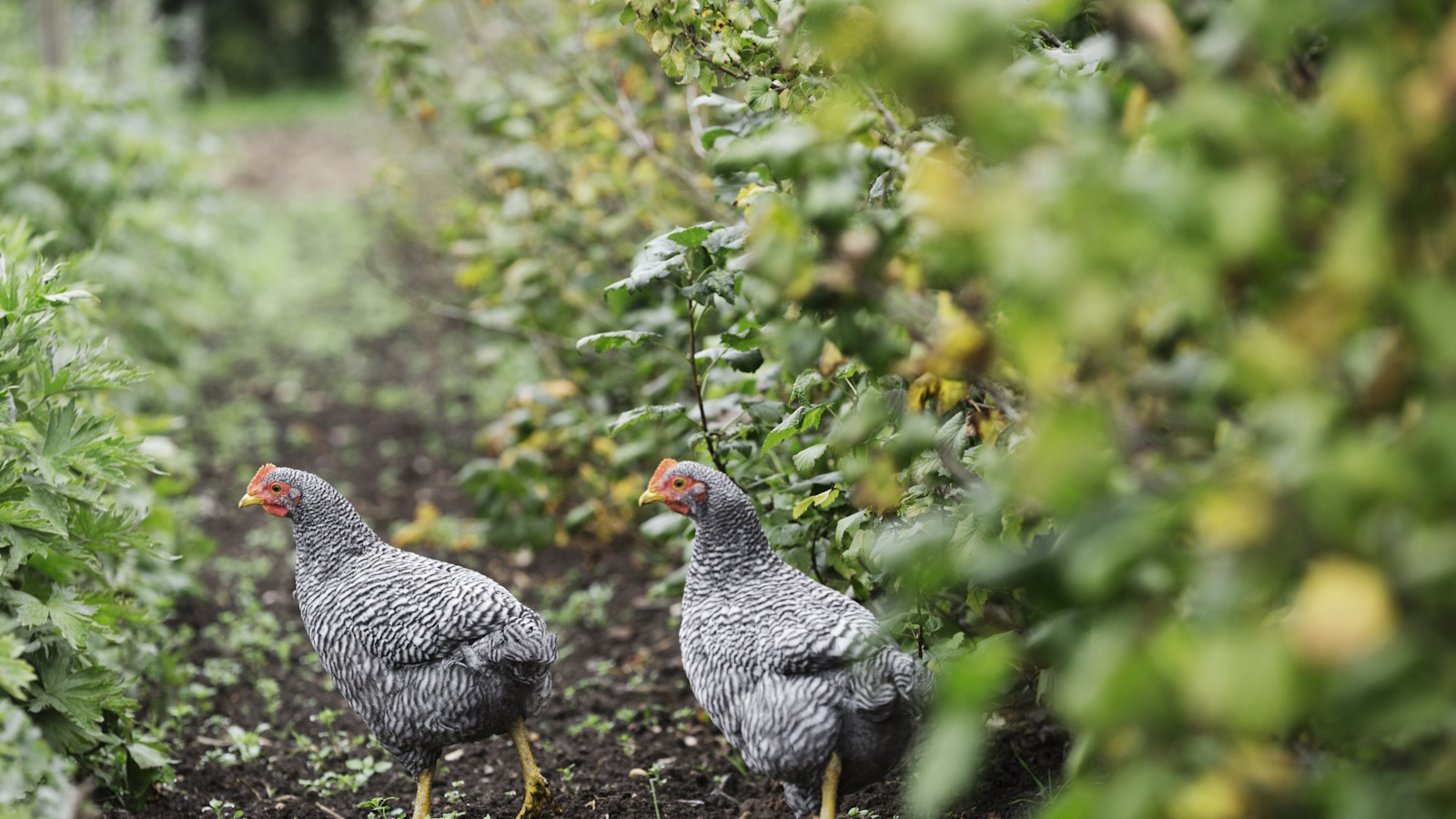 Best plants for a chicken run – 7 fragrant and floral plants for happy hens and beautiful coops
Best plants for a chicken run – 7 fragrant and floral plants for happy hens and beautiful coopsYour chicken run can be every bit as beautiful as your own garden, so long as you do your research first
By Kayleigh Dray